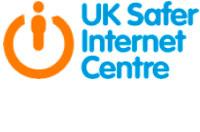Many teachers and professionals use social media sites, such as Facebook, Twitter and WhatsApp, in order to stay in touch with friends and family, to share ideas and get information. This guide is designed to support your personal and professional use of these services, keeping you, the young people you work with, and your job safe.
Top tips for protecting your professional reputation online:
- The best way to find out your online reputation is to search for yourself regularly on a search engine. Use your name and location first then check variations of your name and even nicknames.
- Always think before you post. Is that photo appropriate? Could that joke be seen as offensive? Be mindful when sharing pictures or posts or liking content online which could bring your reputation into disrepute.
- Use privacy settings and safety features which are provided by social media sites to help you manage who can contact you and see the things you share online. The UK Safer Internet Centre provides more detailed information on putting privacy settings in place.
Professional Reputation FAQs
The key is to determine what you want to use that particular social media account for and then decide.
| Personal Use | Professional Use |
| If you are using social media in your personal life you should make the account private. In most cases, if an account is private all that a person will be able to see is the account name and profile picture. | If you are using social media to network, share your ideas, showcase achievements and discuss issues you can make your account public. If you are public remember that anyone can see what you post |
|
|
There are lots of privacy settings and safety features available on social media sites. Some of the things you might want to consider using them for include:
- Securing personal information
- Customising who you share posts with
- Controlling who can contact you and make friend requests
- Monitoring and managing what posts you are tagged in
- Keeping your location private
We recommend declining the request and most school policies will state that you should not accept friend requests from current pupils. If you are receiving frequent requests from the same pupils then speak with your Senior Leadership Team or consider blocking the pupils to prevent further requests.
If pupils are under the age of 13 (the age that most of the popular social media companies have to legally comply with) it is worth asking the young person if their parents or carers know they are using social media and checking they know how to keep themselves safe.
Pupils from a previous school, who have moved schools or those who are now adults may not be covered by your school’s policy. Whilst you are not their teacher or support worker any more you should think very carefully before accepting their request. Young people can have younger siblings or friends still in the school too so we would recommend that you do not accept the request.
If you do find any negative or upsetting posts that will impact your professional reputation then save the evidence by taking a photo or screenshot and tell your school. Do not reply or comment on the post. Instead use the reporting procedures of the site(s) involved and contact the Professionals Online Safety Helpline. If you find an account that has been set up in your name then you should also tell your school and report to the social media site it is on. When reporting make sure you add as much information as possible.
The key message here is to tell your school. Certain issues like cyberbullying and self-harming would be a matter for your school’s Designated Safeguarding Lead. If you were to see this or inappropriate comments about the school or staff you should take screenshots or photos as evidence and inform those responsible for behaviour in your school. If you see a young child on social media that are putting them at risk you should also report this to your school.
If the content which you see online may be an example of sexting then we recommend you refer this immediately to your Designated Safeguarding Lead. For more information on sexting please refer to the UKCCIS Sexting Guidance for Schools and Colleges.
Most social media sitess have an age requirement of thirteen in line with the American COPPA law and many are blocked within schools.
If you are wishing to use social media within the classroom then review our Teachers and Technology Checklist for guidance and support.
 As part of our work in the UK Safer Internet Centre
As part of our work in the UK Safer Internet Centre
